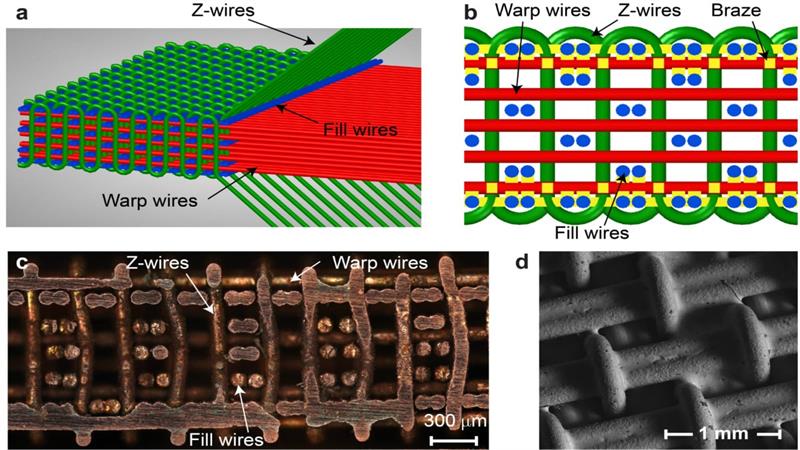The team achieved this near impossible combination by using 3D woven technical textile composite sheets, with selected unbonded fibres – allowing the inside of the material to move and absorb vibrations, while the surrounding material remains rigid.
They believe their new material could usher in a new wave of trains, cars, and aircraft, allowing customers to experience little to no vibration during their travels.
“The idea of a composite the resolves the paradox of stiffness and damping was thought to be impossible – yet here we are,” said Dr Stefan Szyniszewski, Assistant Professor of Materials and Structures at the University of Surrey. “This is an exciting development that could send shock waves through the car, train and aerospace manufacturing industries. This is a material that could make the vehicles of the near future more comfortable than ever before.”

(a) 3D woven (3DW) lattice material is composed of Z- (green), warp (red) and fill (blue) wires; (b) Yellow color indicates the brazing locations (at the top and bottom). (c) Cross-section of 3D woven lattice with the stiff skeleton (the brazed portion on the top and bottom) and free lattice members in the core of the structure, (d) SEM image of the brazed top face, which confirmed metallurgical bonding of the metallic lattices.











